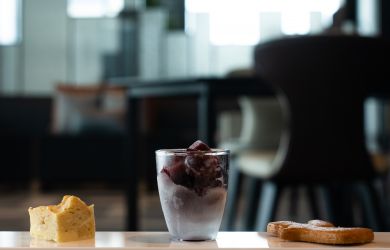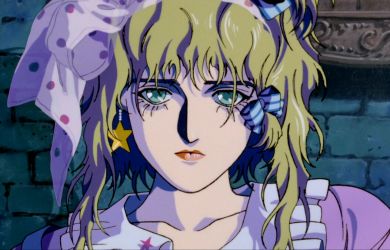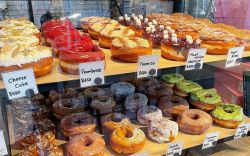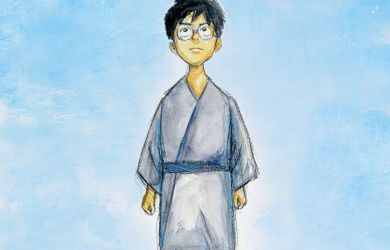
Originally published on metropolis.co.jp on May 2012

A genuine udon maniac wouldn’t think twice about making a day trip to the island of Shikoku for a decent bowl of the thick white noodles. In fact, many folks from as far as Kansai do so. Within the area, Takamatsu is the capital of the foodstuff, and the home of Sanuki udon.
The thick wheat-flour noodles, known in China as wudong, were brought over to Japan in the ninth century by Buddhist monks, and reportedly first eaten in Sanuki, the former name of today’s Kagawa Prefecture, of which Takamatsu is the capital.
I first heard of the biggest city in Shikoku via Haruki Murakami’s Kafka on the Shore, where the main character, Kafka, is mysteriously drawn to Takamatsu from Tokyo, crossing the Great Seto Bridge from Honshu by bus. A 1955 ferry disaster in which 171 lives were lost prompted the epic ten-year construction project of this 13-kilometer bridge, which is the longest double-deck bridge in the world. The 20-minute train ride across it almost justifies the trip in itself. The bridge offers panoramic views over the Seto Naikai (Seto Inland Sea), dotted with islands covered with olive trees that thrive in the Mediterranean-like climate.
Finding a Sanuki udon shop in Takamatsu is about as hard as finding a cake shop in Ginza. Because the weather was warm, we ate our noodles cold on a zaru, or shallow bamboo basket, dipping them in a cold soy-sauce based soup—more diluted in the west country than back east in Kanto.
Common toppings include tempura, sliced negi, or sweetened, fried tofu skins in the case of kitsune (fox) udon—so named because it’s supposedly a favorite of the Shinto fox deity. After a diet of pre-cooked, mushy supermarket udon, eating real homemade Sanuki udon is a revelation. They are ridiculously long, thick, springy and delectably chewy.
However, there’s more to Takamatsu than noodles, such as the famous Edo-era Ritsurin Koen (Chestnut Grove Gardens). Owing to its proximity to Honshu, Takamatsu became a prosperous trading center and castle city during feudal times. Lord and shipping magnate Ikoma Takatoshi used his wealth to begin construction of the garden in 1625, and work wasn’t completed until 1745—after over more than a century of improvements by successive lords.
In the ancient Chinese tradition of borrowed scenery, the heavily wooded surrounding hills and mountains provide a tranquil, natural backdrop to the spacious gardens, a complete circuit of which takes several hours. The gardens are home to various wood workshops producing, and selling, finely crafted bowls, carvings and kitchen utensils.
At the center of the garden is a teahouse, located in a pond filled with the biggest and most ferociously greedy carp I have ever seen. Watching them wolf down their breadcrumbs I couldn’t help remembering the faces of the maniac Kansai day-trippers slurping down their Sanuki udon with the same—almost religious—fervor. After trying Sanuki udon for myself I could understand their dedication.





